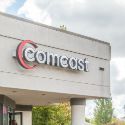As the TV app era begins, operators have to consider the merits of HTML5 and native app platforms. Comcast is developing its own hybrid approach.

What do you do when HTML5 doesn't pan out as a panacea? When it comes to pay-TV apps, you start looking at hybrid alternatives.
At a workshop on "Delivering Video Services to Customer-owned Devices" at the SCTE Cable-Tec Expo event this week, the message to attendees was a cautionary one about the limits of HTML5 development. According to Matt Kalman, a principal consultant on cable, media and wireless at the Interactive Broadband Consulting Group LLC (IBB) , the industry is starting to coalesce around video player standards in HTML5, but the foundation doesn't exist yet for a write-once/read-everywhere app development system. And in fact, even as hybrid apps are gaining traction, the bulk of TV app development is still done in the service of native app platforms such as Roku, Android, iOS and Amazon Fire TV.
Comcast Corp. (Nasdaq: CMCSA, CMCSK)'s SVP of software development engineering, Matt Zelesko, agreed with Kalman's assessment, but he also disclosed that Comcast, at least, is already moving toward a hybrid-app approach in porting its X1 service to new devices.
"I think we're really coming down somewhere in the middle, meaning I would expect the platforms we build are going to be hybrid platforms," said Zelesko. "So you're going to have the ability to do a native rendering experience, and that's typically when the performance -- the frame rate, the animations that you really want to get a top-tier experience -- when you really need that, sometimes you may still need to go native. But there are large parts of the UI, and particularly as we start looking at a third-party app ecosystem on X1, that we'd love to drive through an HTML5 basis. And in fact we're moving in that direction now."
Want to know more about video and TV market trends? Check out our dedicated video services content channel here on Light Reading.
The issue of how apps are developed for different TV platforms is an important one, particularly in light of the FCC vote scheduled for this week. The FCC has proposed that pay-TV providers be required to create apps that allow their services to run on major third-party platforms, and it's recommended that operators be required to go through a licensing body as those apps are developed. (See FCC's New Pay-TV Plan: Shove It Up Your App.)
There was some concern that creating a standardized licensing process would lead operators to default to a lowest-common-denominator HTML5 app version. (See Roku: HTML5 No Panacea for TV Apps.)
However, a recent filing by Roku Inc. with the FCC now suggests that the Commission is willing to make provisions for native platform extensions as appropriate. According to the filing, the FCC is considering defining a standard app license so that it "will include technical appendices addressing any features unique to a particular widely deployed platform."
In other words, pay-TV providers may end up with the responsibility for developing apps that meet some platform-specific requirements as outlined in existing Software Development Kits (SDKs).
So how should operators handle this situation? Regardless of the politics, Kalman believes that pay-TV providers should strive for modularity and re-usability via HTML5, but also plan to address all of the major native platform ecosystems by, yes, working through those platform SDKs. Not only does working through an SDK ensure an app is delivered efficiently, it also gives pay-TV providers an opportunity to work with retail hardware players on the troubleshooting experience.
And as the move away from a traditional leased-set-top model continues, that issue of troubleshooting is going to become increasingly important.
— Mari Silbey, Senior Editor, Cable/Video, Light Reading
About the Author(s)
You May Also Like










